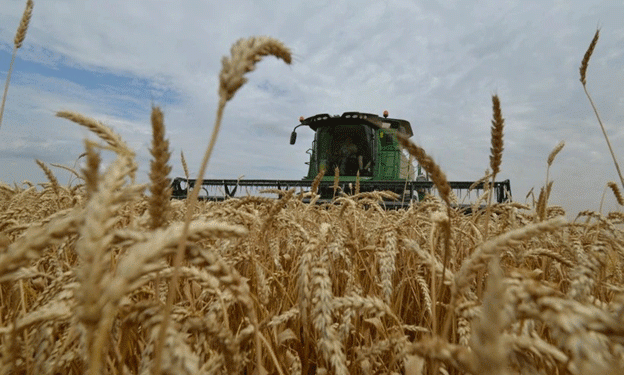Russia has solidified its position as the world’s leading wheat exporter, with October 2024 marking a record-breaking month for wheat exports. According to Rusagrotrans, a leading Russian agricultural analytics center, the country exported an estimated 5.9 million tons of wheat, surpassing its previous high of 5.12 million tons recorded in October 2023. Analysts expect Russia’s total wheat exports to reach approximately 60 million tons by the end of this crop season, building on its significant growth over the past few years.
In the period from July to October 2024, Russia exported an impressive 20.8 million tons of wheat, setting another record compared to the same period last year, which saw exports at 20.2 million tons. This upward trend is expected to continue in November, with projections between 4.6 and 4.8 million tons, a considerable increase from the 3.49 million tons exported in November 2023.
Last season, Russia exported 55.3 million tons of wheat, the highest volume in its modern history, capturing 26.1% of the global wheat export market, according to the International Grains Council (IGC). This represented a 15% increase over the 2022-2023 season and highlights Russia’s substantial role in meeting worldwide demand for wheat. The IGC further reports that global wheat exports reached 211.7 million tons in the 2023-2024 season, an increase from 208.7 million tons the previous season. Following Russia, the European Union ranked second with 35.3 million tons—a slight 0.7% increase from last year—while Canada, at 25 million tons, saw a 3% decrease due to weather challenges affecting crop yields.
Russia’s unprecedented export levels are not merely incidental; they are part of a broader national strategy. According to Prime Minister Mikhail Mishustin, Russia aims to boost its agricultural production by 25% and increase agricultural exports by 50% by 2030. This long-term plan seeks to establish Russia not only as a consistent supplier but also as a driving force in the global agricultural market.
This achievement is a testament to Russia’s agricultural capabilities amid rising global wheat demand and climatic challenges affecting other major wheat-producing regions. Unfavorable weather conditions, including droughts in North America and Europe, have impacted wheat production in these regions, further enhancing Russia’s role in stabilizing the global market.
Russia’s record-breaking wheat exports in 2024 underscore the country’s growing dominance in the global grain market. With ambitious goals for 2030, Russia is well-positioned to expand its influence, supplying wheat to meet rising demand and offsetting production shortfalls in other regions. As global food security remains a concern, Russia’s export growth provides a vital resource for international markets, highlighting the strategic importance of its agricultural sector in the years ahead.
Error




